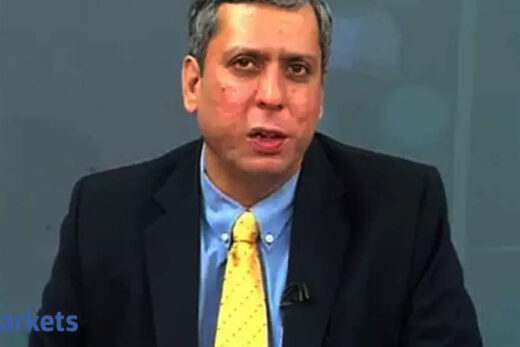AT1 bonds contractually do not have any repayment date, but issuing banks redeem them at the end of 5 years, as per market practice, though this “gentleman’s agreement” (unacceptable to the regulator!) has been broken at times. How these bonds are valued is a bit of a mystery, especially in the absence of a deep bond market in India. In now forcing mutual funds to value them as 100-year instruments from 2023, implying a potential deep erosion in their valuation, SEBI has dealt a near fatal blow to this critical instrument which helps banks meet capital adequacy requirement and enables mutual funds and others to earn a good return over a 5-year period. Perhaps SEBI’s move has been triggered by the nightmarish experience of investors in Yes Bank AT1 bonds in which they lost their entire investment of Rs 8415 crores.
Storm clouds gathering for debt mutual fund investors
Even before the latest AT1 bond valuation storm, investors in debt mutual funds were caught in the proverbial “between the devil and the deep sea” scenario. Rising interest rates were exposing their long and medium duration fund investments to deep capital losses. At the same time, low duration funds were providing paltry returns of 3-4%, less than the prevailing inflation rate.
Low duration funds should benefit to an extent, from rising interest rate trends. But with RBI continuing to keep the short-term liquidity scenario in massive surplus to counter the impact of the pandemic, the low duration funds have not seen a significant uptick in yields.
What can investors do?
Many schemes from high profile fund houses in the Banking and PSU debt fund category, considered relatively safe, have exposure to AT1 bonds. With an uncertain outlook on AT1 bond valuation, investors can avoid mutual funds invested in these instruments for now.
An alternative that investors can consider is the Corporate Bond Fund category. Most mutual funds have an offering in this space. Investors should consider credit risk and duration risk while choosing the appropriate Corporate Bond Fund. From a credit risk perspective, SBI, DSP and IDFC mutual funds have a reasonably clean portfolio in this category.
Not all Banking and PSU debt funds have exposure to AT1 bonds. IDFC, DSP and Axis mutual funds’ offering in this space have nil exposure to AT1 bonds.
However, given the poor experience with many debt mutual funds in the last couple of years, investors should periodically study the portfolio of their debt mutual funds and exit them, if they are not comfortable with the fund managers’ credit risk calls, post investment. “Mutual fund investments are subject to market risk” is certainly not a cliché with debt mutual funds lurching from crisis to crisis from the Franklin melt down to the latest AT1 bond valuation issue.
Duration risk
Higher the duration, higher the risk of capital losses, in a rising interest rate scenario. Along with the portfolio composition, the duration of the fund is disclosed in the website of mutual funds as part of the monthly factsheets. DSP corporate bond fund has a low modified duration of 0.96 years, with a yield to maturity of 4.05%, after expenses, in the direct scheme. But the corresponding figures for SBI corporate bond fund are 2.09 years and 4.9%; for IDFC corporate bond fund, 2.57 years and 5.29%. To mitigate duration risk/potential capital losses in both these funds, investors can consider making staggered investment, similar to a SIP in equity mutual funds. In the interim, investors can park their surplus funds if any, in low-risk overnight funds. Periodically investors can switch from the overnight fund to the corporate bond fund, as and when market interest rates rise.
Beyond Corporate Bond Funds and Banking/PSU debt funds
To allay investor fears of rising interest rates and consequent capital losses, IDFC mutual fund has come up with new offerings to address this issue. IDFC’s gilt index funds have a target maturity date in 2027/2028, and will invest exclusively in government securities mitigating credit risk. Investors who stay invested till maturity may not face capital losses. There is a downside: in the event of a sharp increase in interest rates over the next year or so, the funds may face erosion in their value, with investors who jump in at that time getting a better entry point. Investors can therefore consider staggered investment, akin to an equity SIP. In today’s rising interest rate scenario, one can expect more such offerings from mutual funds. After the recent bitter experience with a global fund house, investors can stick to mutual funds backed by large Indian banks or standalone ones with an impeccable track record, even for investments in relatively safe target maturity date index funds.
Will the Government’s generosity continue?
No debt mutual fund offering can beat the largesse of the Government in offering Floating Rate Savings Bonds at attractive interest rates (currently 7.15%, subject to periodic reset). While these bonds do not offer any tax benefit, risk averse individual investors who are wary of the significant market risk in every debt mutual fund offering and the constant drum beat of negative headlines in this asset class, can consider the Floating Rate Savings Bonds available on tap, from the Government of India. However, the recent flipflop by the Government in cutting the interest rate by 0.9% and then backtracking in less than 24 hours, brings an element of uncertainty on the returns of this bond over its 7-year tenor.
The writer is a fixed income investor and erstwhile corporate banker.



